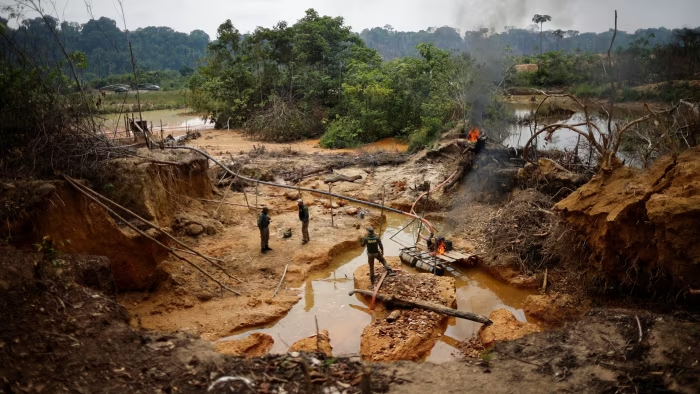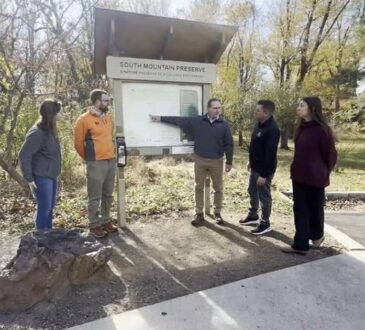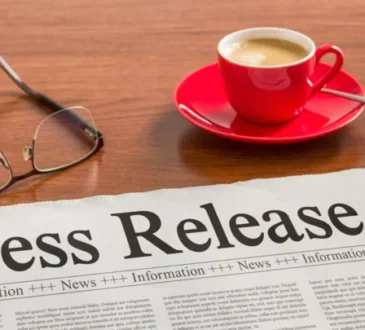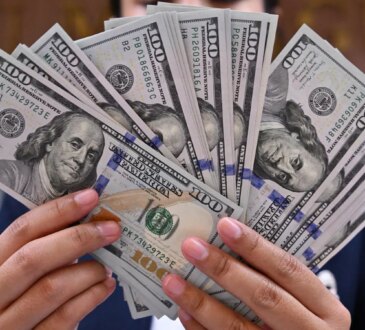
Celia Saw says she lost her unborn child to criminals’ lust for gold.
The 27-year-old from the Munduruku tribe in the Brazilian Amazon suffered a miscarriage at three months, which she believes was triggered by mercury leached into rivers from illegal mining.
Her small, remote village of Sawré Muybu is one of three in the state of Pará where a study published in 2021 found that on average, six out of every 10 residents had levels of the heavy metal above safe limits.
“Today our women are scared of getting pregnant,” said mother-of-two Celia as she recovered in the nearby town of Itaituba, known as the country’s gold laundering capital. “We don’t know if our children will be born healthy or not.”
“Garimpo is completely to blame,” she added, referring to the Brazilian name for wildcat mining, which is generally unlawful in protected areas such as indigenous reserves.
Toxic to both human health and nature, mercury exposure can cause neurological impairments, birth defects and increased risk of pregnancy loss.

Celia’s anguish exposes the human toll of illicit gold extraction across the world’s largest rainforest, a black market business worth billions of dollars annually that has been fuelled by a global rally in prices for the precious metal.
Conservation charity WWF has estimated that 150 tonnes of mercury, used by small-scale informal miners to separate gold from sediment, are released into the Amazon basin region every year.
Indigenous groups say it is slowly poisoning them.
Once in waterways, the organic form of the element, methylmercury, accumulates in fish that are a dietary staple for riverside communities, according to scientists. It can remain in the environment for decades.
Health workers raised the alarm around eight years ago after noticing high levels of requests for wheelchairs from Munduruku people.
The study on the trio of settlements by the Middle Tapajós river, based on samples from 197 people, found their daily mercury ingestion reached up to 11 times the limits recommended by UN agencies.
Forty-three per cent of villagers in Sawré Muybu registered mercury levels above 6mg/g, a safety parameter adopted by the researchers. The rate rose to nine out of 10 in Sawré Aboy, the village closest to mining activities.
Across the populations of those villages, locals report ailments that scientists believe could be linked to the heavy metal.

Lead author Paulo Basta, of the Fiocruz medical institute in Rio de Janeiro, said 16 per cent of children showed neurodevelopmental problems: “There are some who take a long time to hold up their head, sit up, crawl, take their first steps or speak their first words.”
Other residents suffered tremors, dizziness and memory problems. “These neurological symptoms are expressions of lesions inflicted on the central nervous system, [which] are permanent,” added Basta.
Other factors may also be at work, said Basta, such as poor nutrition and sanitation. But he said the health problems could be at least partially attributed to chronic mercury exposure. This can also cause cardiac and renal problems and weaken the immune system.
Celia’s brother-in-law, Valdenildo Saw, 35, recently spent two months immobile after temporarily losing feeling in his lower leg, and also has pain in his arms.
“If I lift anything heavy it’s painful. I can’t walk properly or fish,” he said. Examinations failed to provide an explanation, but Valdenildo too blames mercury.
Researchers are carrying out another study in Munduruku territory on pre-natal exposure to mercury to gauge the long-term effects. Preliminary data has shown that average levels in newborn babies are three times the tolerable limit, rising to five times in pregnant women.

Following a surge in illegal gold mining under Brazil’s hard-right former president Jair Bolsonaro, the government of left-wing leader Luiz Inácio Lula da Silva claims its military-style crackdown is showing success.
Yet the effects on native peoples like the Munduruku illustrate how the challenges go beyond merely expelling miners from the forest.
The use of mercury is severely restricted in Brazil, where it is not produced domestically. Yet the non-profit Instituto Escolhas estimates at least 96 tonnes were illegally imported from 2018 to 2022, based on official production statistics from legalised garimpo areas and trade data.
Federal prosecutors this year said regulations still allow loopholes for the trade of mercury. They recommended the country’s environment agency Ibama expressly ban its import and sale for mining in the Amazon.
A one-time fuel runner in the Tapajós region said he knew of mercury being sold by a construction materials store that serves wildcat miners.
After dredging riverbeds or pumping slurry from man-made ponds, they mix liquid mercury with dirt containing specks of gold, before burning it off to leave behind the treasure.
“It’s expensive, so you wouldn’t throw it away,” says one miner, who asked not to be named. “We have equipment to capture the mercury so it isn’t wasted.”
However, environmentalists say mercury in its gaseous form emitted by the burning is absorbed by surrounding vegetation, then deposited in the soil before entering the water.
Marcelo Oliveira, conservation specialist at WWF, said fish carry it long distances. One study showed that “close to the mining site and 50km, 100km and 150km from it, the level of contamination is practically the same,” he said.

With national borders in the jungle porous to both fish and miners, he said “all the Amazonian countries [need to] close the entry points for mercury and exit points for gold”.
Alternatives to mercury have been proposed, such as balsa wood or “vibration tables” that wash sediment with water to separate out gold particles by force of gravity.
“There’s resistance to switching to these techniques because it takes longer. You can’t clean the gold in half an hour,” says Larissa Carvalho Rodrigues, research director at Instituto Escolhas.
The clampdown on illegal mining has sparked resentment in remote regions of Brazil that rely on it economically.
In Itaituba, where a statue of a gold-panner reflects a decades-long heritage of prospecting, locals say not only gold shops but many other businesses have closed since Lula’s crackdown began in early 2023.
There are even divisions among the Munduruku.
In a hamlet near Jacareacanga, 400km from Itaituba along a dirt highway, local leader Waldelirio Manhuary said garimpo was “not an option, but a necessity”. He learned the trade from his father and took it up again after losing an office job.

“We can’t survive on hunting and fishing any more. We want economic development,” says the 50-year-old. “The valuable things we have here — television, motorbikes, generators — are through garimpo.”
Pro-mining Munduruku are sceptical about alleged mercury poisoning, arguing that rival indigenous factions supported by foreign NGOs want to stop them making a living.
The mines and energy ministry said it was promoting alternative technologies to mercury, training miners and strengthening enforcement; it also takes part in an initiative with neighbours Guyana and Suriname to combat mercury smuggling.
Back in Celia’s village, her father-in-law and cacique, or local chief, Juarez Saw Munduruku fears the long-term consequences of mercury. Three miscarriages have occurred among 25 families this year, says the 64-year-old: “It’s a silent illness that’s very dangerous.”
Some villagers, meanwhile, are raising chickens as an alternative source of protein to fish. But Juarez said their traditional way of life was threatened by criminal trespassers, who he said also brought alcohol, drugs and even malaria.
“We try to avoid eating the bigger carnivorous fish, which are more contaminated. But it’s difficult because miners and loggers have scared away the game we hunt,” he said.
Illicit Amazonian gold is believed to end up in European bank vaults, Indian jewellery stores and refineries in the Middle East.
Celia wants overseas consumers to be aware: “They aren’t buying gold, but our lives and the future of our children.”
Additional reporting by Beatriz Langella and Jorge Carrasco






